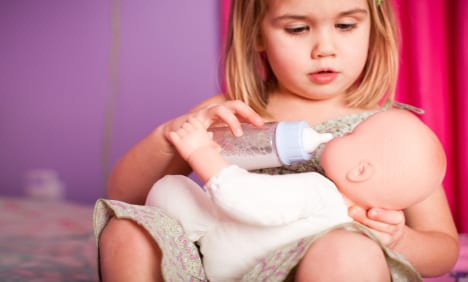You will never believe what toymakers have come up with this time. Say hello to the doll that simulates breastfeeding using a “stylish” halter-top with flowers strategically placed where the nipples would be. The Bebé Glotón doll, manufactured in Spain by the company Berjuan, was introduced to the United States on July 31 at the ASD trade show in Las Vegas.
Hm… so how does it work?
Well, that’s a very valid question. The doll comes with a child-size tank top that the child wears. Sensors are placed within the flowers so that when the doll’s mouth is close, the baby makes suckling sounds.
Naturally, this product has sparked a debate as to whether or not it is appropriate for young children. While critics say it over-sexualizes children and makes them grow up too quickly, others believe that the doll teaches young girls about nurturing skills that may be needed later in life, comparing it to other products that young children have been using for years, such as strollers and bottles.
What is the difference between a child pushing a doll around, feeding it a bottle, or mimicking the burping of it? Perhaps it’s the fact that it involves a body part that can also be considered sexual.
“My take is that anything which reminds young girls that their bodies are something other, and more, than sex objects is a very good thing,” said Dr. Ronald Cohen, medical director of the Mothers’ Milk Bank in California in an article on abcnews.com.
On the other side are those who think that this toy may promote motherhood at a young age. A writer for “Deep South Moms” said that there are simply some things that kids are not old enough to understand. “Let kids use their imagination and play with a doll and not deal with what it can do,” she said. “There’s no need to turn it into something that’s anatomically correct.”
Cesar Bernabeu, Director of Sales and Marketing at Berjuan, maintains that the toy allows children to imitate their mothers, which is a natural and normal part of development. “We realized that the reaction was so positive with the girls when they were imitating their moms… They react to the doll like it was a little sister,” Bernabeu said.
Since this is such an active debate, I’ll leave my comments to myself. However, this toy and the feelings about it are definitely worth some thought.
Are our negative feelings around the toy a cultural inconsistency? Do we need to take a step back and realize any stigmas that we have created around the naturalness of breastfeeding? Do we want our children to be exposed to “adult behavior” at a young age?





